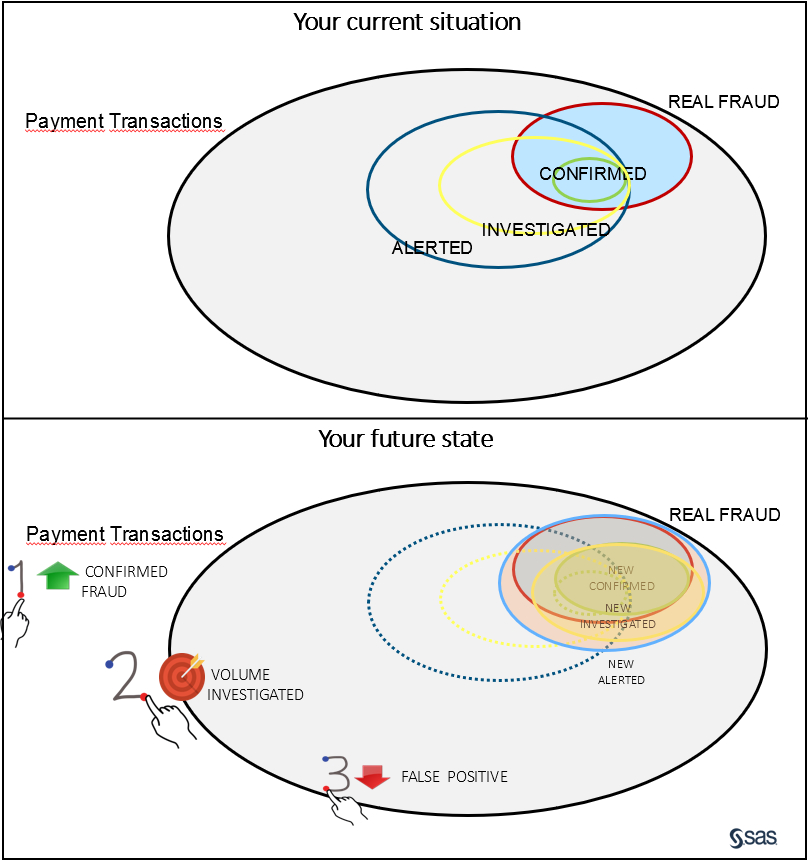According to the Price Waterhouse Cooper 2018 Global Economic Crime and Fraud Survey, the reported rate of economic crime is on the rise, up to 49% in 2018. That makes the use case I want to share particularly relevant, no matter what industry or sector you're in.
This use case applies analytics and AI to help detect and prevent fraud, waste and abuse in your payment transaction systems, and SAS Continuous Monitoring for Procurement Integrity does this better than anything else in the market.
"Since fraud hides in the shadows, one of the most powerful weapons in a fraudster’s armory is a lack of awareness within organizations."
- PwC 2018 Global Economic Crime and Fraud Survey
Here's a picture that I hope is worth tens of millions of dollars to you and your organization. "Your current situation" shows what your process probably looks like today and it's results.The blue and yellow ovals show a lot of work and effort is wasted because your auditors are being tasked with lerts and investigations that really aren't a problem, and as shown in the green oval, only a small amount of real fraud is being detected.

"Your future state" shows how much better your process could be in not only detecting, but also preventing fraud after you apply SAS' analytics and AI-driven automated and continuous monitoring approach to this issue. See how the "new alerted" and "new investigated" ovals focus your limited audit resources more efficiently on real fraud with the results showing:
- More confirmed fraud (detected and/or prevented).
- Increased number of cases of real fraud investigated.
- A decrease in wasted time investigating false positives.
How SAS saved a global utility $16 million+
We met with a global utility company and did a six week proof-of-value with a subset of their data and applied a subset of our rules and analytics, which resulted in the company immediately identifying and saving $16 million in fraud, waste, and abuse discovered in this one subset of their data. In addition, this proof of value identified $300 million of payments to suppliers known to be colluding with employees -- and $500 million paid to suppliers without ever receiving goods.
Why SAS?
SAS has an extensive track record in providing analytical fraud solutions across all industries (with many references), and our solution offers an end-to-end framework that provides these three main benefits:
- Automates more of your process, allowing for more investigations.
- Detects more fraud, saving you more money.
- Reduce false positives, saving you more time.
These three benefits will also result in:
- Increasing your employees' effectiveness (thereby improving their morale).
- Overall reduction in fraud, waste and abuse, helping protect and improve your organization’s brand.
No matter what industry or what country you work in, I would urge you to reach out to SAS to find out more about SAS Continuous Monitoring for Procurement Integrity -- because the sooner you start using this solution, the more money you'll save your company by detecting and preventing the fraud, waste, and abuse that's hiding in your payment systems today.
